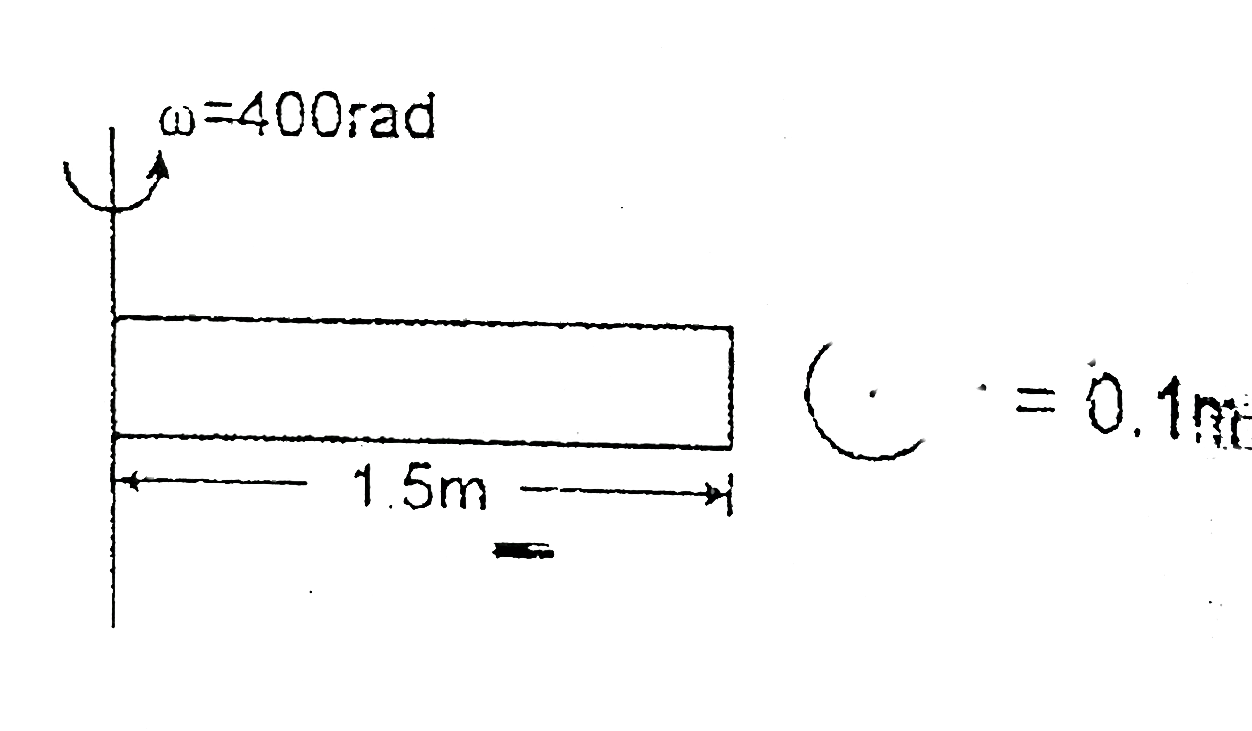An imaginary galaxy is considered to consist of N starts each of mass M and with each pair of stars at a mutual separation of R. If N=4, R≈1021m, M=2×1030kg, find out the gravitational potential energy of galaxy.
To find the gravitational potential energy of the galaxy consisting of N stars, we can follow these steps:
Step 1: Understand the formula for gravitational potential energy between two masses
The gravitational potential energy U between two masses m1 and m2 separated by a distance r is given by the formula:
U=−Gm1m2r
where G is the gravitational constant.
Step 2: Determine the number of pairs of stars
For N stars, the number of unique pairs of stars can be calculated using the combination formula:
Number of pairs=N(N−1)2
For N=4:
Number of pairs=4(4−1)2=4×32=6
Step 3: Write the total gravitational potential energy for the galaxy
The total gravitational potential energy Utotal for N stars can be expressed as:
Utotal=−Gm2R×Number of pairs
Substituting the number of pairs:
Utotal=−Gm2R×6
Step 4: Substitute the values into the formula
Given:
- G=6.67×10−11N m2/kg2
- m=2×1030kg
- R=1021m
Substituting these values into the equation:
Utotal=−6×(6.67×10−11)(2×1030)21021
Step 5: Calculate Utotal
First, calculate (2×1030)2:
(2×1030)2=4×1060
Now substitute this back into the equation:
Utotal=−6×(6.67×10−11)(4×1060)1021
Utotal=−6×(6.67×4)×10−11+60−21
=−6×26.68×1028
=−160.08×1028J
=−1.6008×1030J
Final Answer
The gravitational potential energy of the galaxy is:
Utotal≈−1.6008×1030J
The gravitational potential energy U between two masses m1 and m2 separated by a distance r is given by the formula:
U=−Gm1m2r
where G is the gravitational constant.
For N stars, the number of unique pairs of stars can be calculated using the combination formula:
Number of pairs=N(N−1)2
For N=4:
Number of pairs=4(4−1)2=4×32=6
The total gravitational potential energy Utotal for N stars can be expressed as:
Utotal=−Gm2R×Number of pairs
Substituting the number of pairs:
Utotal=−Gm2R×6
Given:
- G=6.67×10−11N m2/kg2
- m=2×1030kg
- R=1021m
Utotal=−6×(6.67×10−11)(2×1030)21021
First, calculate (2×1030)2:
(2×1030)2=4×1060
Utotal=−6×(6.67×10−11)(4×1060)1021
Utotal=−6×(6.67×4)×10−11+60−21
=−6×26.68×1028
=−160.08×1028J
=−1.6008×1030J
The gravitational potential energy of the galaxy is:
Utotal≈−1.6008×1030J
Topper's Solved these Questions
- BOOK - FIITJEECHAPTER - GRAVITATIONEXERCISE - Solved problem (Subjective)10videos
GRAVITATION
- BOOK - FIITJEECHAPTER - GRAVITATIONEXERCISE - Solved problem (Objective)15videos
GRAVITATION
- BOOK - FIITJEECHAPTER - GMP ASSESMENTEXERCISE - Numerical Based61videos
GMP ASSESMENT
- BOOK - FIITJEECHAPTER - HEAT AND TEMPERATUREEXERCISE - NUMERICAL BASES QUESTIONS1videos
HEAT AND TEMPERATURE
Similar Questions
Knowledge Check
- Question 1 - Select One
_S01_033_Q01.png)
A triple star system consists of two stars each of mass m in the same circular orbit about central star with mass M=2×1033kg. The two outer stars always lie at opposite ends of a diameter of their common circular orbit the radius of the circular orbit is r=1011 m and the orbital period each star is 1.6×107s [take π2=10 and G=203×10−11Mn2kg−2]
Q. The mass m of the outer stars is:A118×1030B1516×1030C403×1030D203×1030 - Question 2 - Select One
_S01_033_Q01.png)
A triple star ststem consists of two stars each of mass m in the same circular orbit about central star with mass M=2×1033kg. The two outer stars always lie at opposite ends of a diameter of their common circular orbit the radius of the circular orbit is r=1011 m and the orbital period each star is 1.6×107s [take π2=10 and G=203×10−11Mn2kg−2]
Q. The mass m of the outer stars is:A1615×1030kgB118×1033kgC1516×1030kgD811×1030kg - Question 3 - Select One
_S01_034_Q01.png)
A triple star ststem consists of two stars each of mass m in the same circular orbit about central star with mass M=2×1033kg. The two outer stars always lie at opposite ends of a diameter of their common circular orbit the radius of the circular orbit is r=1011 m and the orbital period each star is 1.6×107s [take π2=10 and G=203×10−11Mn2kg−2]
Q. The orbital velocity of each star isA54√10×10/sB54√10×105m/sC54√10×102m/sD54√10×104m/s
Given Y=2×1011N/m2,ρ=104kg/m3
Find out elongation in rod.
 View Solution
View SolutionTwo point masses 1 kg and 4 kg are separated by a distance of 10 cm. Find gravitational potential energy of the two point masses.
View SolutionThe radius of the earth is 6.37×106 m and its mean density is 5.5×103kg m−3 and G=6.67×10−11N-m2kg−2 Find the gravitational potential on the surface of the earth.
View SolutionFind the gravitational force between a man of mass 50 kg and a car of mass 1500 kg separated by 10 m.
View Solution_S01_035_Q01.png)
A triple star ststem consists of two stars each of mass m in the same circular orbit about central star with mass M=2×1033kg. The two outer stars always lie at opposite ends of a diameter of their common circular orbit the radius of the circular orbit is r=1011 m and the orbital period each star is 1.6×107s [take π2=10 and G=203×10−11Mn2kg−2]
Q. The total machanical energy of the system isView Solution


 .
.